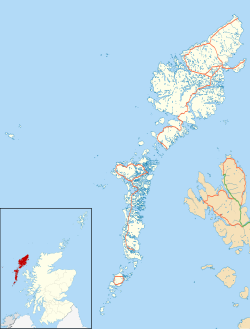History
Until the 13th century, Lewis – and Tong with it – was part of Norway. Fishing, farming and weaving made up Tong's economy by the 1800s. [3] Later in the century, landlords throughout much of Lewis ousted their tenants to install sheep farms and deer forests, industries which used huge swathes of land with few farmers. [4] Many families moved to Tong, causing "horrific overcrowding." [3] Scottish historian James Hunter quotes a mainland land manager's 1828 description: “It is worse than anything I ever saw in Donegal [in Ireland] where I always considered human wretchedness to have reached its very acme.” [3]
Between 1919 and 1921, Tong, along with nearby Coll and Gress, was the scene of several land raids. (See the Coll, Lewis article for more).
During the land raids, men raided estates with absentee landlords by planting crops and marking out farms on land used for sheep herding. Tong in particular was considered particularly radical; John Maclean, a Scottish socialist, who visited the area after World War I, "saw it as a "hotbed of insurrection" during a visit after World War I, and even through the 1990s, Tong’s residents were called "Bolshiveeks" by a Stornoway slang dictionary. [3]
Tong's economy struggled in the early 1900s – crops were failing, the herring industry lost its main clients due to American Prohibition and the Russian Revolution, the 1918 flu epidemic killed many, and World War I killed thousands more of Hebridean men and the government failed to keep its promises of land for the survivors, pulverizing the summer social seasons where young people found their future spouses over putting the sheep out to graze. Though emigration was long a trend on Lewis, all these factors increased the rate significantly. [3]
Circa 2016, Tong received much attention due to the candidacy of U.S. President Donald Trump, whose mother was born in Tong. The land nearby is described as flat and marshy with fields of peat, with fishing and sheep farming still parts of the local economy. [3]
This page is based on this
Wikipedia article Text is available under the
CC BY-SA 4.0 license; additional terms may apply.
Images, videos and audio are available under their respective licenses.









